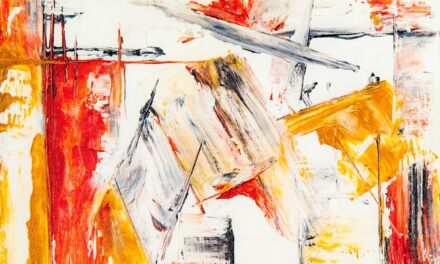Ink drawing is a captivating art form that has stood the test of time, captivating artists and audiences alike for centuries. This medium, characterised by its bold lines and intricate details, offers a unique way to express creativity and emotion. The history of ink drawing can be traced back to ancient civilisations, where it was used for everything from religious texts to intricate illustrations.
Today, it remains a popular choice among artists, both for its accessibility and the striking results it can yield. The versatility of ink allows for a wide range of styles, from delicate sketches to bold, graphic compositions, making it an essential skill for any aspiring artist. The allure of ink drawing lies not only in its aesthetic appeal but also in the meditative process it encourages.
The act of drawing with ink requires a certain level of focus and intention, as each stroke is permanent and cannot be easily altered. This permanence can be both daunting and liberating, pushing artists to embrace spontaneity and creativity in their work. As we delve into the various tools and techniques associated with ink drawing, we will uncover the myriad ways in which this medium can be harnessed to create stunning visual narratives.
Summary
- Ink drawing is a versatile and timeless art form that allows for a wide range of expression and creativity.
- When choosing pens for ink drawing, consider the line weight, ink flow, and nib type to find the right tool for your style and technique.
- Brushes offer a unique way to create texture and variation in ink drawings, with different types and sizes providing different effects.
- Nibs are essential tools for creating intricate and detailed ink drawings, with various nib types and sizes catering to different artistic needs.
- Mastering fundamental techniques such as hatching, cross-hatching, stippling, and line variation is crucial for creating dynamic and expressive ink drawings.
Choosing the Right Pens for Ink Drawing
Selecting the appropriate pens is crucial for achieving the desired effects in ink drawing. There is a vast array of pens available on the market, each designed for specific purposes and styles. For instance, fountain pens are renowned for their smooth flow of ink and ability to create varying line widths depending on the pressure applied.
They are particularly favoured by artists who appreciate the elegance and tradition associated with this tool. On the other hand, fineliners offer precision and consistency, making them ideal for detailed work and intricate designs. Their fine tips allow for meticulous control, enabling artists to create delicate lines that can bring their drawings to life.
When choosing pens, it is also essential to consider the type of ink used. Pigment-based inks are often preferred for their lightfastness and water resistance, ensuring that artworks remain vibrant over time. In contrast, dye-based inks may offer a broader range of colours but can be less durable.
Artists should also take into account the nib size and shape when selecting pens, as these factors significantly influence the overall appearance of the artwork. By experimenting with different pens, artists can discover their unique preferences and develop a personal style that reflects their artistic vision.
Exploring Brushes for Ink Drawing
While pens are often the go-to tools for ink drawing, brushes offer a different approach that can yield stunning results. Ink brushes come in various shapes and sizes, each providing distinct effects that can enhance an artist’s work. For instance, round brushes are versatile and can create both fine lines and broad strokes, making them suitable for a range of techniques.
Flat brushes, on the other hand, are excellent for filling in larger areas or creating bold, sweeping lines. The flexibility of brushwork allows artists to explore a more fluid style, capturing movement and emotion in their drawings. When working with brushes, it is essential to consider the type of ink being used.
Some artists prefer using traditional Chinese or Japanese inks, which have a rich history and unique properties that lend themselves well to brushwork. These inks often have a thicker consistency that allows for expressive strokes and washes. Additionally, experimenting with different surfaces can further enhance the effects achieved with brushes; textured papers can create interesting interactions between the ink and the surface, adding depth and dimension to the artwork.
By embracing the possibilities offered by brushes, artists can expand their repertoire and discover new ways to express their creativity.
Understanding Nibs and their Uses in Ink Drawing
Nibs are an integral part of ink drawing that often goes overlooked by beginners. These small metal tips come in various shapes and sizes, each designed to produce different line qualities and effects. For instance, a flexible nib allows for dynamic line variation, enabling artists to create expressive strokes that convey movement and energy.
Conversely, a stiff nib produces consistent lines that are ideal for detailed work or calligraphy. Understanding the characteristics of different nibs is essential for artists looking to master this medium. In addition to their physical attributes, nibs also require specific handling techniques to achieve optimal results.
For example, when using a dip pen with a flexible nib, artists must learn to control the pressure applied to create varying line widths effectively. This skill takes practice but can significantly enhance an artist’s ability to convey depth and texture in their work. Furthermore, experimenting with different inks can yield exciting results; some inks may flow more smoothly through certain nibs, while others may produce unique textures or effects.
By exploring the world of nibs, artists can unlock new creative possibilities and refine their ink drawing skills.
Techniques for Ink Drawing with Pens
Ink drawing with pens offers a wealth of techniques that can elevate an artist’s work from simple sketches to intricate masterpieces. One popular technique is cross-hatching, where artists create shading and texture by layering parallel lines in different directions. This method allows for a range of tonal values and can add depth to an otherwise flat image.
Additionally, stippling—using small dots to build up areas of shade—can create a delicate texture that draws the viewer’s eye. Another effective technique is contour drawing, which involves capturing the outline of a subject without lifting the pen from the paper. This method encourages artists to observe their subjects closely and develop a sense of fluidity in their lines.
Combining these techniques can lead to unique results; for instance, an artist might use cross-hatching to add depth while employing contour lines to define shapes clearly. By experimenting with various techniques, artists can develop their own signature style and push the boundaries of traditional ink drawing.
Techniques for Ink Drawing with Brushes
When it comes to ink drawing with brushes, the techniques available are as diverse as the brushes themselves. One fundamental technique is wash painting, where diluted ink is applied with a brush to create soft gradients and subtle transitions between tones. This method is particularly effective for backgrounds or atmospheric effects in a composition.
Artists can experiment with varying levels of dilution to achieve different intensities of colour, allowing for greater control over the final outcome. Another technique worth exploring is dry brushing, which involves using a brush with minimal ink on its bristles to create textured strokes on paper. This approach can produce interesting effects that mimic natural textures such as fur or foliage.
Additionally, artists may choose to combine brushwork with other mediums—such as watercolour or pencil—to create mixed-media pieces that showcase the versatility of ink drawing. By mastering these techniques, artists can harness the expressive potential of brushes and elevate their ink drawings to new heights.
Techniques for Ink Drawing with Nibs
Ink drawing with nibs opens up a world of possibilities for artists seeking precision and detail in their work. One fundamental technique is called “line variation,” which involves manipulating the pressure applied to the nib while drawing. By pressing harder or lighter on the nib, artists can create lines that vary in thickness, adding dynamism and interest to their compositions.
This technique is particularly effective in creating expressive illustrations or calligraphic works where line quality plays a crucial role. Another technique that can be employed with nibs is “ink splattering,” where artists flick or tap the nib to create random splashes of ink on the paper. This method adds an element of spontaneity to an artwork and can be used effectively in abstract pieces or as a background texture in more detailed illustrations.
By exploring these techniques, artists can fully utilise the potential of nibs in their ink drawing practice.
Tips for Mastering Ink Drawing Fundamentals
To truly master ink drawing fundamentals, artists must cultivate patience and practice regularly. One effective approach is to set aside dedicated time each day or week for focused practice sessions. During these sessions, artists should experiment with different tools and techniques without the pressure of creating a finished piece; this exploration fosters growth and helps develop individual style over time.
Additionally, studying the works of established ink artists can provide valuable insights into various styles and approaches within this medium. By analysing how other artists use line quality, shading techniques, and composition strategies, aspiring ink drawers can gain inspiration and refine their own skills. Joining art communities or workshops focused on ink drawing can also offer opportunities for feedback and collaboration with fellow artists.
Ultimately, mastering ink drawing requires dedication and an open mind towards experimentation. By embracing both traditional techniques and contemporary innovations within this medium, artists can unlock their creative potential and produce captivating works that resonate with viewers on multiple levels.


